- Attractions
- Opening Times & Prices
- Interactive Map
- Visitor Centre
- Accessibility
- Holiday Cottages
- Camping and Glamping
- News & Blog


History & Heritage
- Heatherslaw Corn Mill
- Lady Waterford Hall
Flodden Battlefield
- Ford Castle
- Etal Castle
- Ford Moss Colliery
- Archaeology on the Estates
- Conservation
- Bird Watching
- Property To Let
- Ford & Etal Sawmill
- Village Halls to Hire

This famous battlefield, just outside Branxton village, was the scene of one of the bloodiest battles ever to take place in the British Isles. On 9 th September 1513, over 500 years ago, 14,000 soldiers from Scotland and England died within a few hours. James IV of Scotland was heavily defeated and became the last British monarch to die in battle in Britain.
A monument, erected in 1910, commemorates the dead of both nations and the Battlefield Trail covers the ground where the two armies met in combat. This is the central site of 41 sites across Britain which together make up the Flodden Ecomuseum.
Free and open access to the battlefield site throughout the year. Flodden Battlefield is the core site of the Flodden 1513 Ecomuseum, established to commemorate the quincentenary of the battle in 2013.
LEARN MORE ABOUT THE BATTLEFIELD AND ITS HISTORY
Opening Times
Free access throughout the year
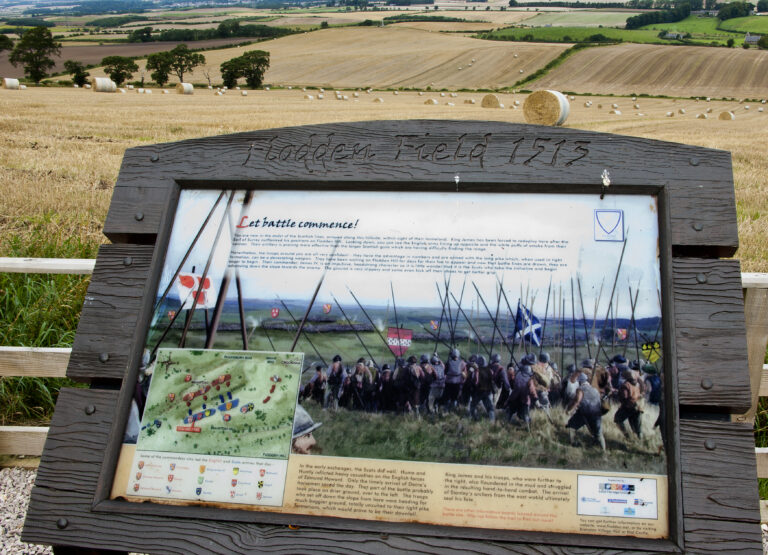
Contact Details
- Ford & Etal Sawmill
switch website
Privacy Overview
Necessary cookies are absolutely essential for the website to function properly. This category only includes cookies that ensures basic functionalities and security features of the website. These cookies do not store any personal information.
Any cookies that may not be particularly necessary for the website to function and is used specifically to collect user personal data via analytics, ads, other embedded contents are termed as non-necessary cookies. It is mandatory to procure user consent prior to running these cookies on your website.
- Where to Stay
- Where To Go
- Food and Drink
- Visit Northumberland
- Business Membership
Flodden Battlefield Guided Walk
Share this page.
On 9th September, 1513, English and Scottish troops collided on Flodden Field. The outcome of this battle was a tragedy that changed the course of history. Join local historian Clive Hallam Baker on a guided walk around Flodden Battlefield on Saturday 9th September, the 510 anniversary of the battle and also on Sunday 10th September to learn the fascinating details of this momentous day.
There is no need to book, just turn up at Branxton Village Hall for a 2pm start. The walk covers about one-and-a-half miles over a grass track and includes one optional steep slope.
There is no charge for this event but donations towards the upkeep of the Flodden Trail will be gratefully received.
Enquiries to Clive Hallam-Baker: [email protected]
- Dates & Prices
A Mini Guide to Berwick-Upon-Tweed
June 19, 2024, welcome to glam racket events at paxton house, june 13, 2024.
Honest guide to Scotland & N. England
Flodden Battlefield
📌 Branxton, Northumberland ★★
A simple stone cross on a shallow rise above Branxton village in Northumberland marks the approximate centre of the English starting battle line in the 1513 Battle of Flodden, which ended in a catastrophic Scottish defeat. The battle was initiated by the Scots in order to honour the “Auld Alliance” – a pact between Scotland and France – by diverting Henry VIII’s English troops from their ongoing campaign against the French. Scottish troops were positioned on Flodden Hill, but the unexpected arrival of the English army from the northern rather than southern direction necessitated a hasty repositioning to Branxton Hill – leaving little time for the Scots to carve out new gun emplacements. The Scots still had the advantage of height, but a successful early charge downhill on the left (west) flank may have led to misplaced confidence. The rest of the Scottish army descended into a boggy depression where their cumbersome pikes were no match for English billhooks. Over ten thousand soldiers died in battle – the majority on the Scottish side – in what was, in terms of numbers, the largest battle ever fought between the two countries. The Flodden Battlefield Trail marks out the key events along a slightly muddy, 1-mile circuit – a rather emotive experience amidst a rural landscape which somehow still seems weighed down by past tragedy. We found getting to grips with the sequence of events a little confusing, but the rural location (unlike many other Scottish battle sites today) means you can at least get a good view of the area where different phases of the conflict took place. Pick up a leaflet at the start to help navigate the trail, or take a picture of the map board with a mobile phone if paper copies aren’t available.

📌 Monument is off minor road west of Branxton 🧭 O.S. Grid Reference: NT 890373 🛰️ GPS coordinates: 55.628770,-2.176507
🚌 Extremely infrequent bus to Branxton 🚗 Car park
⌚ Always open 🎫 Free 🔗 flodden1513ecomuseum.org
Related Features
Post navigation, previous post.

No comments yet. Why don’t you start the discussion?
Leave a Reply Cancel reply
Your email address will not be published. Required fields are marked *
Save my name, email, and website in this browser for the next time I comment.
This site uses Akismet to reduce spam. Learn how your comment data is processed .
Help keep SOBT online

32. Early uses of 'Flodden' to Refer to the Battle Site
There is a quite widely held view that the use of the placename ‘Flodden’ for the site of the battle between the Scottish and English armies in 1513 did not come about until long after the event.
33. James IV - The Act of Dispensation
On 24th August 1513, just two days after crossing into England, James IV held what was to be his last Council with the assembled nobility and clergy at Twizelhaugh, where what became known as the Act of Dispensation was passed.

34. The Landscape of Branxton-Crookham c. 1513
The evidence, historic maps.
The townships of Branxton and Crookham (the latter incorporating Pallinsburn) are relatively well-covered by historic maps, with a number dating back to the mid to late 18th century.

35. Fieldwalking
In the autumns of 2014 and 2015 a programme of fieldwalking was undertaken as part of the Flodden 1513 project. The aim of the fieldwalking section of the project was to look for artefacts that may have been associated with the movement of the Scottish and English armies to and from Branxton, where the Battle of Flodden took place in 1513.

36. Fieldwalking and metal detecting
Introduction.
Sixty-eight fields were identified for investigation at the start of the project. Eighteen of the fields were subsequently fieldwalked, at least ten of these were also metal-detected. Ten fields were metal-detected only, although in some cases this was by a single detectorist. The first two charts provide a broad guide to the quantity of artefacts recovered, although it should be borne in mind that not only do the size of the fields vary, but also the proportion of each field metal-detected or field-walked.

37. Domino Day
It was a mild October morning when I set off for a day’s fieldwalking at Branxton. What better way to spend a birthday, I thought. Hmmm . . . I imagine there are many who would not agree with me but I was happy to do so.

38. Excavations on the Battlefield
Flodden field 2012: test pits and trial trench.
In 2012 test pits and a trial trench were excavated on the north-western side of the registered battlefield. This was centred on Field 19, but also extended north into Field 12, and east into Field 15.

39. Piecing Together who was at the Battle
Among the English knights that stood before Branxton Hill and faced the Scots army on the 9th of September 1513 was Sir William Molyneux. He had made the long journey north from distant Lancashire with a “considerable force” to stand alongside his kinsman Sir Edward Stanley at the rear of the English ranks and in command of a company of archers.

40. William Gascoigne at Flodden
I moved to Berwick-upon-Tweed from Leeds in January 2011 and soon after I read a notice in the Berwick Advertiser about a proposed transcription project around the Battle of Flodden.

41. The Trewe Encounter
The transcription and translation of this document known as “The Trewe Encounter or Battle” is the first printed account of the Battle of Flodden. The undated document in Old English was written after the battle, probably by an Englishman from a verbal account, and closes with the words “Imprinted by me. Richard Faques, Dwelling In Poulys Church Yard”.

42. Berwick and the Battle of Flodden
On 9 September 1513, the ferocious battle, which later became known as the Battle of Flodden, took place near Branxton, a mere twelve miles away from the town of Berwick-upon-Tweed. Yet we know very little about the part the battle played and its effect on the town, as, unfortunately, there are very few sources to help us.
The Battle of Flodden: The Battle


The Battle of Flodden Field
With the 500th anniversary of the Battle of Flodden Field soon upon us, it seemed timely to take a look at the significance of this epic battle between the Scots and the English….
In the early part of the 16th century, England and Scotland were separate countries locked in a struggle for power. Henry VIII of England was making bold claims about being “the overlord of Scotland”, much to the anger of the Scottish King James IV. Meanwhile the “Auld Alliance” between Scotland and France was firmly in place. In an effort to aid their French allies, the Scots agreed to attack England in order to divert English forces from their campaign against Louis XII of France, and to try to take control of England for themselves.
Scots troops advanced into England and on 9th September 1513 a historic battle took place near to the village of Branxton in Northumberland. Known as the Battle of Flodden Field, the Scots were routed by the superior English forces led by the Earl of Surrey. Several factors contributed to the Scots defeat, notably the efficacy of the English bill (a long staff with a hooked blade at the end) which in part due to the nature of the terrain was able to easily overcome the Scots pike (a type of spear). Contemporary figures estimate English losses at around 1500 men, with the loss of around 12,000 Scots (some estimates put this figure much higher at around 18,000 -20,000).
Many notable Scots earls and clan chiefs were killed at Flodden, including the king himself, James IV (the last British monarch to meet this fate). Days after the battle, parliament met at Stirling Castle and the late king’s 17 month old son was crowned King James V.
Flodden ranks as the last great medieval battle fought on British soil and today you can visit Branxton village where there is a monument to the dead and an interpretative trail around the battlefield itself. There are plans to commemorate the quin-centennial anniversary of the battle in 2013 and you can find out more about events here. A great blog post on the battle itself can be found at the Freelance History Write r’s site.
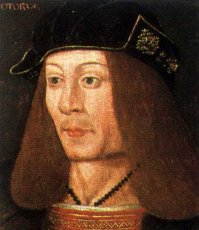
Flodden & Selkirk Common Riding
Only one man, Fletcher, made it back to the small Borders town of Selkirk after Flodden bearing a captured English flag (or standard). He cast the flag above his head to indicate that all the other Selkirk men had perished in the battle. Flodden is still commemorated to this day during the Selkirk Common Riding Festival which is held every year in June. The Standard Bearer (a young man chosen to represent the town) casts the colours of the burgh in a moving ceremony which is followed by a minutes silence for those killed in war and then the playing of The Liltin’, a version of the folk song The Floo’ers of the Forest, also written to commemorate the battle. The Floo’ers of the Forest is a well known pipe tune which is regularly played at funerals and particularly at services of remembrance for British troops killed in battle. To listen to this haunting lament click here and to see the casting of the colours at Selkirk please click here.
Derry-Londonderry City of Culture 2013
Flowers of the Forest (pipes)
Related posts
Feis ile , blackness castle, the ship that never sailed , the little white rose , bonnie prince charlie , the kelpie, scotland’s mythical water horse , the border abbeys .
- Accommodation
- Sample Itineraries
- Guided tours
Username or Email Address
Remember Me
Registration is closed.

Your Name (required)
Your Email (required)
Your Message
Prove you aren't a robot by typing this code
Get in touch for a personalised discussion of your vacation requirements

DISCOVER THE BATTLE THAT SHAPED OUR NATIONS
Flodden 1513 ecomuseum.

With contributions from volunteers, archaeologists, archivists, teachers and pupils this book gives a flavour of the work done during the life of the Flodden Project.
Linking sites across Britain connected to The Battle of Flodden.

Flodden: Legends & Legacy
The Battle of Flodden took place on 9th September 1513 between the English and the Scots in a remote part of north Northumberland.
2013 was the 500th anniversary of this event and there was a desire on both sides of the border to commemorate the battle, help communities to create their own events and leave a lasting legacy which would raise the public profile of the Battle of Flodden and its place in history.
This publication gives a flavour of what has happened during the life of the Flodden Project.

The Flodden 1513 Ecomuseum
Flodden 1513 ecomuseum & the flodden 500 project.
Chapters 1 - 14
Thanks to support from the Heritage Lottery Fund, the Flodden 500 Project has encouraged many local people, under expert guidance, to carry out a wide range of archaeological and archival research.
The Project also led to the expansion of the Flodden 1513 Ecomuseum. This legacy is a ‘museum without walls’ which links together over 40 sites and other aspects of heritage nationwide which have a connection to the Battle of Flodden through history, folklore or legend.

Flodden Hill Excavation
Community excavations, documentary research projects, learning programmes and public events were organised as part of the Flodden 500 Project.
Flodden: An Ancient Landscape
Chapters 15 - 18
Without a shadow of bias the landscape around the field of Flodden is one of beauty and of variety. This diversity of landscape and the underlying geology that underpins it is also woven through the fabric of the Battle of Flodden.
The research area covered by the Flodden Project’s archaeology programme has produced material indicating human activity over a period of nearly 10,000 years. The finds are important as evidence of the human role in shaping the current landscape.

Evidence from Prehistory
‘The Flodden Project’s programme of fieldwork has clearly made an important contribution to our knowledge of the region’s Mesolithic, Neolithic and Bronze Age periods.’ Dr Rob Young
The Battle of Flodden
Chapter 19: Strategic Decisions at Flodden Dr Chris Burgess
While much has been written about the motivations, the movements and the actions of King James IV of Scotland in the summer of 1513, leading eventually to the disastrous engagement of Branxton Moor, or Flodden, little or no consideration is given to the strategic decisions and intent of James before and during his campaign into northern England.
The 500th anniversary of this campaign spawned a wide range of commemorative and research projects which hoped to shed new light on Flodden; the campaign and the battle.

Excavations at Norham Castle
The work of the Flodden 500 Archaeological Project saw the first concerted programme of archaeological research in the area of the battle.
The Campaign Chapters 20 - 31
The focus of much study has concentrated on the activities of the English and Scottish armies in England between the 22nd August and 9th September 1513 but very little is known about how the extensive Scottish force, its artillery train and camp followers travelled through the Scottish Borders, what route it took and where it camped.
Prior to the current investigations initiated through the Flodden 500 Project, all that was known with any degree of certainty was that James IV of Scotland departed Edinburgh on 17th August 1513 and crossed the English Border on 22nd August 1513.

THE ALNWICK MUSTER ROLL
Compiled in February 1514, the Alnwick Muster Roll is one of the most important contemporary documents in the North East of England linked to the Battle of Flodden.
The Battle Chapters 32 - 42
The area designated the Registered Battlefield by Historic England was defined on the basis of a few place-names given in Tudor accounts and reports of battle-related finds.
The Flodden 500 Project earmarked areas across the designated battlefield site for metal-detecting, field-walking and archaeological excavation to record and recover artefacts datable to 1513.
Studies of related artefacts, documents and maps were also carried out in a bid to discover more about the battle.


SWORD OR DAGGER HANGER
A number of finds can be dated to the early 1500s including a buckle with pendant loop which may be a sword or dagger hanger. This artefact could be related to the battle, however, swords and daggers were commonly carried in daily life at this time.
After Flodden Chapters 43 - 46
Documents written in the immediate aftermath of the battle were studied by the Project’s archivist and volunteers. These included the wills of Scots who fought at Flodden and a document, kept in the National Archives, which records the horses distributed after the battle.
In the nineteenth century there was a renewed interest in the battle, due initially to Sir Walter Scott. In 1808, in the early years of his writing career, Scott published Marmion, his narrative poem about Flodden.
The Battle of Flodden still resonates profoundly on both sides of the border today.

MAUCHLINE WARE
There was a revival of interest in Flodden related souvenirs in the Victorian period. Around 1864, the Robb brothers of Coldstream began to produce souvenirs “Made of Wood Grown on Flodden Field”. Transfer decoration on these wooden trinkets often depicted places linked to the battle.
Flodden What have we learnt?
Chapter 47 David H Caldwell
The Flodden 500 Project contained three main areas of activity: archaeology; archival research and the routes to Flodden. Simple questions have been asked again, like how do we know what happened and where did it take place. New sources of information have been sought and old ones revisited. The actual battle has been placed in a wider context.
This chapter gives an overview of the Project’s achievements and suggests what else might be done in the future.

WHAT HAVE WE LEARNT?
‘The Project has produced an important block of research material and an impetus that will hopefully mean that interest in, and knowledge of Flodden, will not stand still.’ David H Caldwell

Battle of Flodden
9th september 1513.

Name: Batle of Flodden
Date: 9 September 1513
War period: Early modern
Start time and duration: 4pm lasting several hours
Outcome: English victory
Armies and losses: English under Earl Surrey with around 26,000 men; Scottish under King James IV with 35-40,000 men. Losses: English: circa 4,000; Scottish: circa 10,000.
Location: securely located in the fields south of the village of Branxton and fought across open upland pasture / arable land.
Map details: Grid Reference: NT895371 (389596,637112); OS Landranger map: 75; OS Explorer map: 339
An invading Scottish army was heavily defeated and the Scottish King James IV was killed. The last time a reigning British monarch was killed in battle.
King Henry VIII of England acceded to the throne in 1509 and from the outset was keen to secure England's position on the Continental stage. To this end he joined an alliance with Spain and Pope Julius II against France in 1511. King James IV of Scotland was married to Henry’s sister but also had an alliance with France. When Henry invaded France in 1513 the French King Louis XII called upon James for assistance. James was persuaded to invade England and so divert troops away from the war on the continent.
Assisted with French arms, ammunition and some troops, James crossed into England in August with an army of up to 60,000 men. His intentions were to draw English forces north and so deplete the troops available for war in France. To this end he confined his activities to capturing the border castles of Etal and Ford, using the latter as his base, and sending raiding parties into the countryside. But Henry had anticipated an invasion from Scotland and had assembled his forces for the continental campaign mainly from the counties of southern England, leaving Thomas Howard, Earl of Surrey in command in the north.
In response to the Scottish invasion, the Earl of Surrey mustered troops from across the northern and midland counties. By early September there was an army of some 26,000 assembled at Alnwick. James's army had now shrunk, by desertion and through troops being detached for garrison duty, to 35-40,000. Surrey now issued a challenge to James, which was eventually accepted, with a battle to take place by the 9th September at the latest.
James moved his army to the steep hill of Flodden Edge. When Surrey arrived on 7th September and saw the tactical advantage the Scots had taken he requested James to take a more level ground where each had the same chance. Unsurprisingly James declined to move stating that he would ‘ take and keep his ground at his own pleasure’ .
In response, on 8th September Surrey marched his army in a wide sweep to the north-east, several miles east of the Scottish position and on the opposite side of the river Till. Now he could advance against the Scots from the north, avoiding the entrenched Scottish artillery which were facing south against the expected direction of English attack, and also stopping the Scottish army retreating across the border without engaging.
James saw this manoeuvre from his vantage point on Flodden Edge but it was not until the morning of the 9th that he realised Surrey's intent. He then ordering his army to turn about and march a mile to the north from Flodden Edge to Branxton Hill, which formed the northern edge of this area of high ground. As the English, somewhat delayed by the crossing of the Pattins Burn, drew up to the south of Branxton village on a slight rise below Branxton Hill the Scots were already in battle formation and ready to attack. Despite initial Scottish success, the battle of Flodden was to prove a devastating defeat for the Scots. Casualties were very heavy and amongst the 10,000 killed were nine earls, thirteen barons, five heirs to titles, three bishops, two abbots and even the King himself. The battlefield is now fully enclosed but remains as agricultural land, although there are several modern woodland plantations around the edges of the battlefield. Access is possible via several minor roads and permissive footpaths. A monument to the battle erected in 1910 stands on Piper's Hill and the Remembering Flodden Project ( http://www.flodden.net ) has erected a number of information boards across the battlefield.
- Historic England Battlefields Register CLICK HERE
- Historic England battlefield report for Battle of Flodden 1513
Explore the Battlefields Hub
Battle Locations
Battle Timeline
Find a Battle

Flodden Guided Walks
– exploring the –, battle of flodden.
Join our experienced guide for an interesting and informative walk exploring the Battle of Flodden, the death of King James IV and all the key events before, during and after 9th September 1513.
A fantastic way to learn about the Battle of Flodden and explore some magnificent Northumbrian countryside.
• Dogs on leads welcome • Meet outside St Paul’s church, Branxton. Parking opposite the church • Adults £8.00, Children £4.00 • Please wear suitable clothing and footwear as the battlefield walk can often be muddy • 2 hours, 4.5 km, 2.8 miles, 1 steep hill to climb • Groups and private tours by arrangement – please contact for details

Focus on how you can help and benefit your user. Use simple words so that you don’t confuse people.

Graphic Design

Content Creation
For any questions or queries, please drop us an email below…
Planning a Visit?
- Flodden on the Battlefields Trust open_in_new
- Donate open_in_new
- Our Website
- Cookie Policy
- Terms & Conditions of Use
© Remembering Flodden & Border Heritage, 2022. Registered Charity number 1131558.
Flodden Field and the Campaign of 1513
John Sadler takes us on a tour around Flodden Field, and explains how the terrain played such a major part in the campaign.
The Battle of Flodden was fought because Henry VIII planned to invade France in 1513 in support of the Habsburg Emperor. His fear was that his brother-in-law, James IV of Scotland, an ally of France, would take the opportunity to attack Northern England.

James, stung by Henry’s contemptuous rebuttal of several ultimatums, pushed ahead with plans for an invasion of Northumberland, his efforts boosted by supplies of bullion, arms, and a cadre of military advisors from France. He had resolved to drill his raw levies in the advanced pike tactics developed and practised with great élan and success by the redoubtable Swiss mercenaries.
The English host was led by Thomas Howard, Earl of Surrey, 2nd Duke of Norfolk – England’s venerable senior commander, who had started his long career as a Yorkist during the Wars of the Roses. The English were inferior in numbers to the Scots.
Most contemporary commentators give the English between 16,000 and 26,000 men, made up mainly of the retainers of the magnates and of the shire levies from counties north of the Trent. The Lord Admiral, Thomas Howard Junior, brought a stiffening of 1,200 marines from the fleet, and Lord Dacre furnished some 1,500 border horses. Surrey also had an artillery train, though his was made up of lighter field pieces.
These English guns could not compare with the Scots’ artillery in terms of weight of shot, but they were faster-firing and more manoeuvrable – on the field, the English gunners would emerge victorious from the opening artillery duel.

After the initial Scottish muster on the Burgh Muir, the host moved south to the border to commence the siege of Norham, the Prince Bishop’s great stronghold by the River Tweed. The castellan had advised Surrey he could hold out until relieved, but the Scottish artillery was too formidable. After five days of bombardment and escalade, the fortress surrendered.
Avoiding confrontation
James went on to take the lesser strongholds of Etal and Ford, both of which were then slighted. There is no indication that he intended to seek battle, his objective could have been attained without the hazard of a general engagement. He may have wished to put his army to the test, but the first position he chose, astride Flodden Edge and overlooking Millfield Plain, was an entirely defensive one. The guns were well dug-in and the terrain worked in the Scots’ favour. Surrey’s decision to attempt an outflanking manoeuvre and occupy Branxton Hill was a bold one. But it nearly came unstuck as a significant gap opened between his and The Lord Admiral’s division. James chose not to exploit the opportunity, but to await his enemies’ full deployment. This was fully consistent with Swiss doctrine.
Hostilities began with a brisk artillery duel. The heavier Scottish ordnance, having been dragged over the intervening saddle, could not be properly dug-in (the gunners were by no means Scotland’s best as many were attached to the fleet). Very quickly, the English gunners established fire supremacy, as their Scottish counterparts fell or deserted, and round-shot began to fall amongst the densely-packed ranks of spears.
For James, this was intolerable. He unleashed Home and Huntly’s powerful division on the Scottish left. They charged to the dip at the foot of Branxton Hill, where they encountered a far lesser obstacle than the gunners; Edmund Howard, the youngest of the three Howards, and his weak brigade on the English right instantly folded. Only Edmund Howard himself, with a handful of knights, kept the field and fought on against hopeless odds. A timely intervention by Dacre’s horses restored the position, shoring up the crumbling flank. Home’s unwillingness to continue the fight smacked of treachery and collusion – scarcely an unusual arrangement in border warfare.

Lay of the land
Meanwhile, King James and the division of Errol, Crawford, and Montrose, hurled themselves downhill against the English centre. The ground, however, proved far more difficult than the view from the hilltop suggested: the dip was deeper and the banks more marshy than either appeared. The momentum of the charge, key to success with pikes, was lost, and with it, cohesion. The Scots struggled through wet and mire, to find themselves slogging up a rise to meet the English line, which surged forward to engage. Their pikes proved no match for the formidable English bill now that impetus was lost. Most dropped staves to draw swords, and The Lord Admiral’s men swiftly gained the upper hand. D’Aussi’s reserve merely added to the scrum, and many Scots began filtering away.
Only the highland division under Lennox and Argyll remained uncommitted, and the clansmen were scattered by Edward Stanley – though the Stanleys came late to the fight, an opportune and brilliant flank attack broke the highlanders and killed their chiefs. Appeals to Home to bring his and Huntly’s men into the ring fell on deaf ears. James had, in fact, battered a salient into the mass of the English centre, one which was in danger of being annihilated as the bills closed in. The King and his nobles, encased in fine harness, fought on doggedly, whilst many of the commons decided upon discretion. In a final quixotic gesture, James and his household men flung themselves upon Surrey’s banners. The King of Scotland died almost unseen in the ruin of his proud army. As dusk fell, the English were masters of the field. Perhaps as many as 8,000 fell in total; the English losses made up only 1,000. Flodden was the worst of Scotland’s many defeats on the English border.
The battlefield today
Today, there is a car park in Branxton and the church is well worth a visit. The monument, erected in 1910, is a large granite cross on Piper’s Hill. Directly ahead of you stands the ridge itself, and one can see the commanding nature of the Scottish position. Although the marshy dip has been diminished as an obstacle by subsequent field drainage, it is still clear how difficult this incline leading up to the English position would have been.

Stand at the top of the ridge, however, and these obstacles are not apparent: we can see why James, with no scouting, had been so dangerously misled. Some battlefield archaeology has been carried out recently, and the digging continues. Flodden Edge, south of the Branxton position over the undulating saddle which links the two, still has evidence of the earlier gun-pits. Standing here, looking over the plain, one can easily discern why Surrey had shuddered at the thought of a frontal assault.
Take the track beyond the cross towards Branxton Stead, and ascend Branxton Hill. Turn left by the farm and pick up the road back down to Branxton. Marden Farm is to your right and a footpath links this to the settlement. Nearby, at Etal Castle, English Heritage has mounted an excellent display and interpretation of the battle; the castle, featured in the action of 1513, and the site are well worth a visit. Norham should also be on anyone’s itinerary: the castle still dominates the river crossing and village below, and the magnificent stone keep underlines the importance of the Prince Bishop’s castle in border warfare.
This article appeared in issue 2 of Military History Matters (formerly Military Times ). To find out more about subscribing to the magazine, click here .
Leave a Reply Cancel reply
Your email address will not be published.
Rated 98% based on 1029 reviews

UK 0345 475 1815 USA (toll free) 877‑209‑5620 International 00 44 345 475 1815 [email protected] Rated 98% on feefo
Sign-in Latest News Subscribe Request Brochure
- Future Planning
- Military History and Battlefield Tours
- Classical History and Archaeological Tours
- Holocaust Tours
- General History Tours
- Experience Tours
- Walking Tours
- Early Periods
- 17th & 18th Century
- Victorian Era
- First World War
- Second World War
- Cross-Periods
- Destinations
- Our Expert Historians
- Historians Q&A
- Historical Tailor Made Tours
- School Tours
- Battlefield Studies
- Testimonials
- What to Expect
- Activity Levels
- Tour Diaries & Images
- Our Library
- Frequently Asked Questions
- Work For TCE
- General Booking Conditions
- Download Booking Form
- Tours by Date
- Tours by Theme
- Tours by Period
- Tours by Destination
- Latest News
- Request Brochure
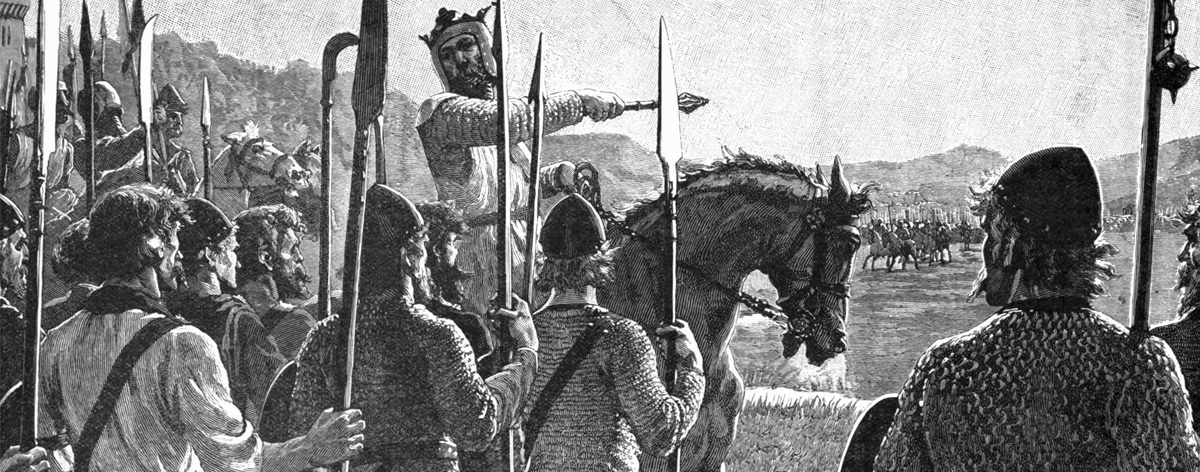
Scotland Forever
To be confirmed
click here to register your interest
Your Holiday Essentials
Tour introduction.
The sixteenth century was the last to see armed conflict between England and Scotland. Whilst the last battle was fought at Pinkie in 1547, it is the English victory at Flodden in 1513 that is the most celebrated. With Henry VIII’s attention focused on leading his army in France, a Scottish army under James IV invaded England and drew up on a low ridge known as Flodden Edge to meet a hastily formed English army under Thomas Howard. Lacking restraint, the impetuous Scots were badly mauled. The result was a far cry from the disciplined success achieved by the armies of William Wallace and Robert Bruce almost 200 years previously where, at two carefully selected and prepared defensive positions outside of Stirling, the Scots won immortal fame as they destroyed the English forces of John de Warenne and Edward II on the fields of Stirling Bridge and Bannockburn respectively. The period between these two great conflicts was the crucible in which Scottish nationhood was formed with the continuing pendulum of the ‘Three Hundred Years War’ between the two kingdoms as a backdrop; events which remain both current and topical in terms of the current Scottish nationalist debate.
Inescapably the major commemorations of two of these battles could have a significant influence on the outcome of the current Scottish nationalist debate, we will examine the impact of these battles both militarily and politically each day ending with a topical talk to lead discussions on the historical impact on the independence debate. The battlefield tour will provide opportunities to wear actual harness and weald the swords of the period. For the more adventurous, there will be opportunities to try your hand as a man (or woman) at arms. The tour is based entirely out of the Norton House Hotel & Spa, one of the finest country house hotels in Edinburgh and AA Hotel of the Year Scotland 2010.
- With medieval expert Dr John Sadler
- The legacy of Flodden, Stirling & Bannockburn
- Exclusive Bannockburn Live King’s tickets
- The largest battle re-enactment seen in Scotland
"For that is the mark of the Scot of all classes: that he stands in an attitude towards the past unthinkable to Englishmen, and remembers and cherishes the memory of his forebears, good or bad; and there burns alive in him a sense of identity with the dead even to the 20th generation."
Robert Louis Stevenson
Day 1 - Introduction
Assemble at our Edinburgh hotel and check-in for four nights. Introductory talk ‘The Great Cause, England and Scotland at War’ followed by dinner.
Day 2 - Flodden
Just over 500 years since the battle of Flodden was fought, we visit the exhibition at Etal castle which was taken and held by the Scots prior to the battle. Thence to Flodden where commence our tour from Piper’s Hill. Talk ‘The days of the Steel Bonnets; unification of the crowns & legacy’ followed by dinner.
Day 3 - Wallace & Bruce
We look at the success of two icons of Scottish independence: William Wallace and Robert Bruce. We visit the Wallace Monument, Stirling Castle and explore the probable site of the battle of Stirling Bridge (1297). Talk ‘Flowers of the Forest – how Flodden came about’ followed by dinner.
“For so long as 100 men remain alive, we shall never submit to the domination of the English. It is not for glory or riches or honours that we fight, but only for the liberty which no good man will consent to lose, but with his life”. Robert Louis Stevenson
Day 4 - Bannockburn
We visit Bannockburn Memorial Park, where, by virtue of our ‘VIP Kings Ticket’ we will take grandstand seats for ‘Bannockburn Live’, the largest re-enactment of the battle ever held in Scotland and explore the themed villages and be one of the few to enter the newly opened battlefield visitor centre. Talk followed by dinner.
Day 5 - Home
Check-out of our hotel for homeward journeys.
Photo Gallery
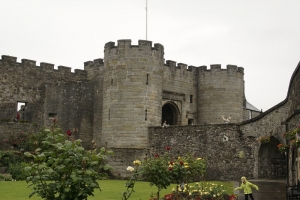
direct link
Subscribe to Our E-Newsletter
For up to date news as well as details about all of our tours please subscribe to our fortnightly e-newsletter

Quick Links
Military History and Battlefield Tours Classical History and Archaeological Tours Holocaust Tours General History Tours Experience Tours Walking Tours Future Planning Request Brochure Site Map
The Cultural Experience 11B Mansfield Park Four Marks Alton GU34 5PZ United Kingdom
UK: 0345 475 1815 USA (toll free): 877 209 5620 International: 00 44 345 475 1815
© 2015 - 2024 Midas Tours Ltd - Hosted by SWD - Legal Info - Terms of Use - Privacy Policy / Cookies - Sign-in

15 Must-Visit Civil War Battlefields Where You Can Walk Where History Was Made
Posted: June 23, 2024 | Last updated: June 23, 2024
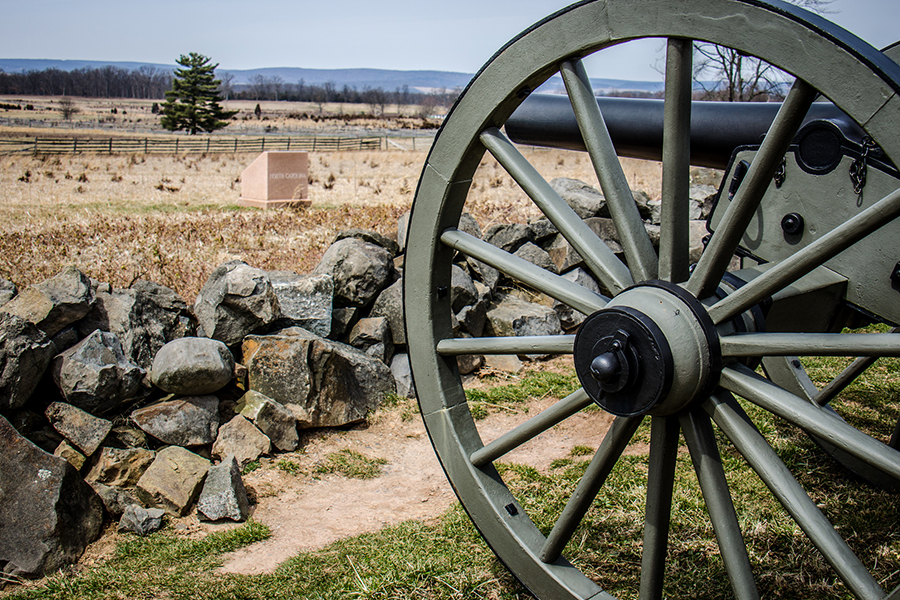
The Best Civil War Battlefields to Visit
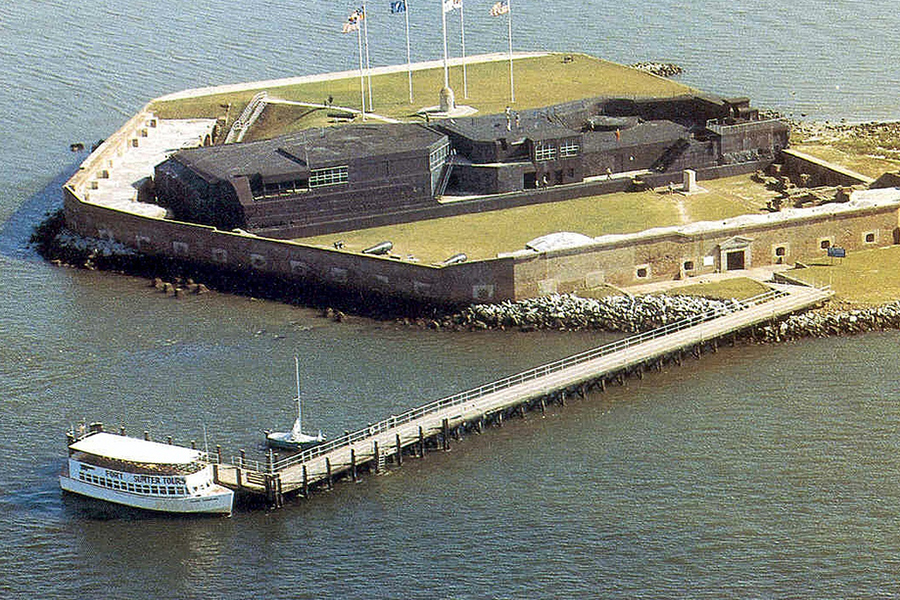
Fort Sumter
Go to Fort Sumter to stand where it all started. Tensions had been leading to war for a long time, but the Battle of Fort Sumter is the act that tipped the scales from "really tense situation" to "full-on war." After seven states declared secession from the U.S., South Carolina demanded that the U.S. Army abandon its facilities in the state.
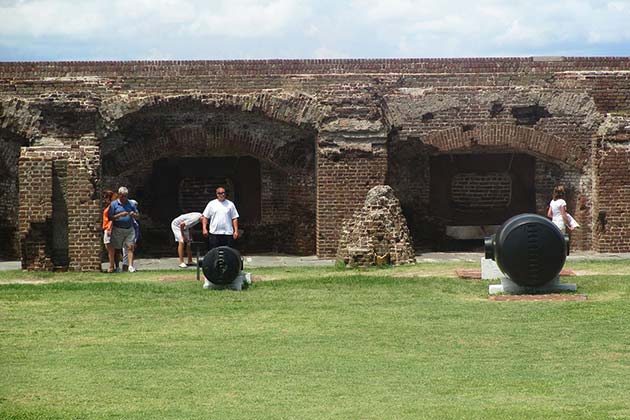
South Carolinian soldiers captured all federal lands save one fort and began bombarding it. In the end, the U.S. Army agreed to leave it, and nobody was killed during the fighting. The standoff was the first crisis faced by President Lincoln, just a month after his inauguration. His call for volunteers to suppress the rebellion afterward caused another four states to leave the Union.

Spotsylvania County
Spotsylvania County had a couple of horrifying battles. The first is dubbed “The Battle of the Wilderness.” This was the first major battle of the Overland Campaign. Grant pushed Lee’s army toward Richmond in an attempt to destroy it, and on May 5th, it all came to a head. This bloody battle left over 3,700 soldiers slaughtered due to heavy assaults and vicious fires. Neither side won.
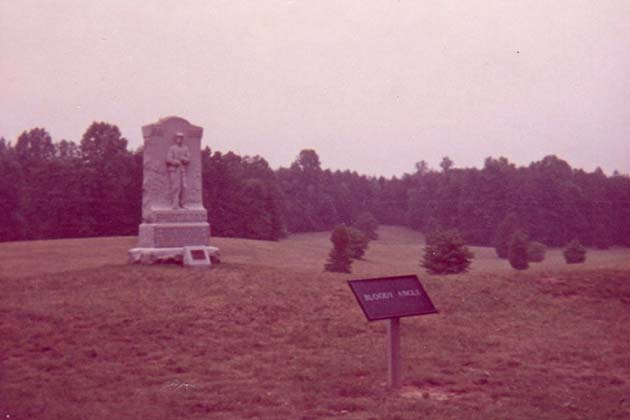
The second battle is known as The Battle of Spotsylvania Courthouse and occurred soon after the Battle of the Wilderness. Both the Union and Confederates mounted attacks over 14 days. The bloodiest battle occurred on May 12th, when Grant attacked “Mule Shoe” with 20,000 troops. The fighting lasted for 20 hours, which caused this area to be called “Bloody Angle.” Both sides declared victory despite huge losses.

Located near Sharpsburg, Maryland, the Battle of Antietam was the first major battle to take place on Union soil in September of 1862. It was also the bloodiest single-day battle in any war in all of American history. Overall, 22,717 Americans wound up dead, wounded, or missing.
It was here that George B. McClellan routed an attempt by Lee to invade Maryland, while Joseph Hooker attacked Lee's flank. The battle covered a great deal of ground, which you can see hour-by-hour via an atlas at the Library of Congress's website. Or you can actually stand where soldiers stood, and see it for yourself.
General Lee rallied his forces and made a second attempt to invade the North. Circumventing his failures in Virginia, he hoped to make it as far as Harrisburg or Philadelphia. Instead, he was roundly defeated by George Meade in a battle that marked a turning point in the war.
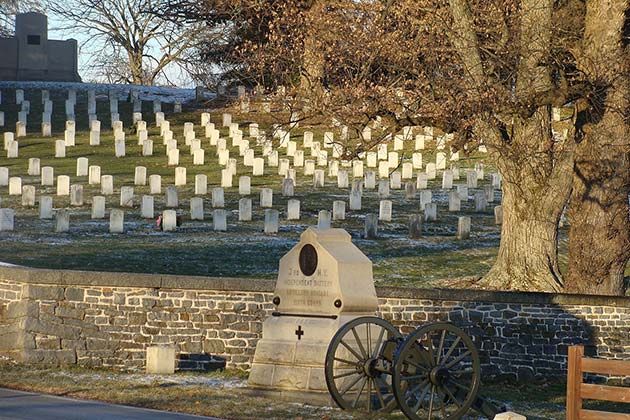
Over the three days of the battle, anywhere from 46,000 to 51,000 Americans were killed. Part of the site became the Gettysburg National Cemetery, and President Lincoln's speech dedicating this cemetery, known now as the "Gettysburg Address," is the reason most people know this place.

Few sites have more Civil War history than Richmond, Virginia. During the Civil War, Richmond served as the capital of the Confederate States of America almost during the entire event. It was vital the Confederacy keep it because it provided their side with weapons and much-needed supplies thanks to it being the terminus of five railroads. The Union made many attempts to invade Richmond and only did so in 1865 during a long siege.
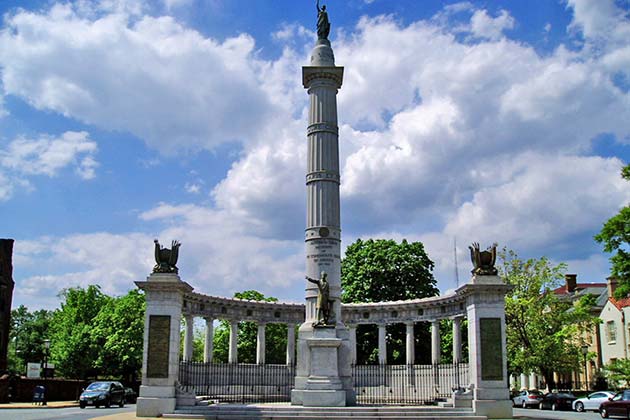
Grant captured Petersburg and Richmond in early April 1865. The fall of Petersburg caused President Davis, his Cabinet, and the Confederate defenders to abandon Richmond and flee south. The retreating soldiers set fire to everything. The fire spread out of control and went unchecked. Civilians retreated and surrendered while Union troops put out the raging fire. One week after the evacuation of Richmond, Robert E. Lee surrendered to Grant.
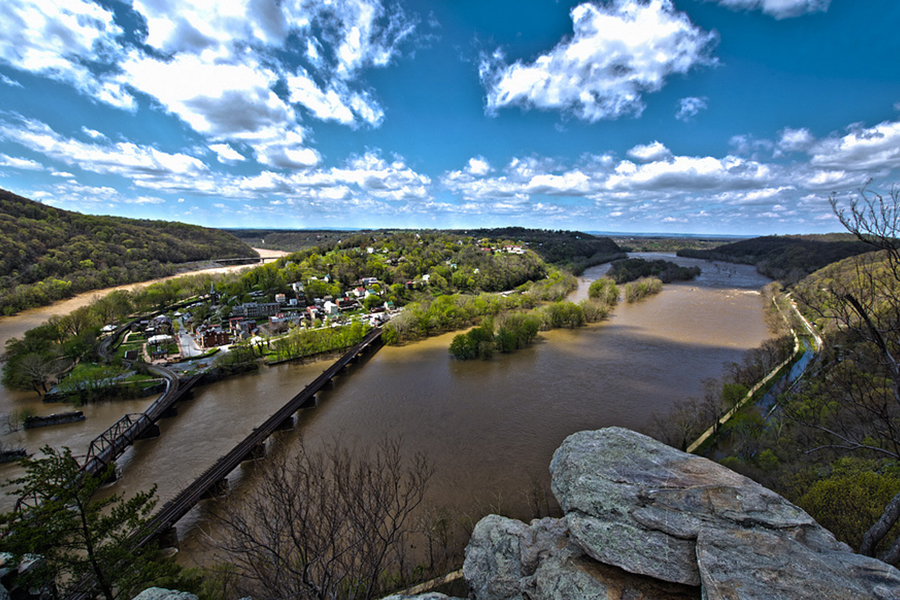
Harper's Ferry
Harper's Ferry has a strong place throughout much of American history. Here, Robert Harper set up passage over the Potomac, helping settle the Shenandoah Valley. Here, Washington proposed the site for the second armory and arsenal in the country. Here in 1859, John Brown raided that arsenal, attempting to initiate an armed slave revolt.
Because of its strategic location and railroad, the Union and Confederacy battled for control, with the town changing hands eight times between 1861 and 1865. It was a staging ground for Lee's attempted invasion of Maryland that led to the battle of Antietam, but it was also hotly contested in the years that followed.
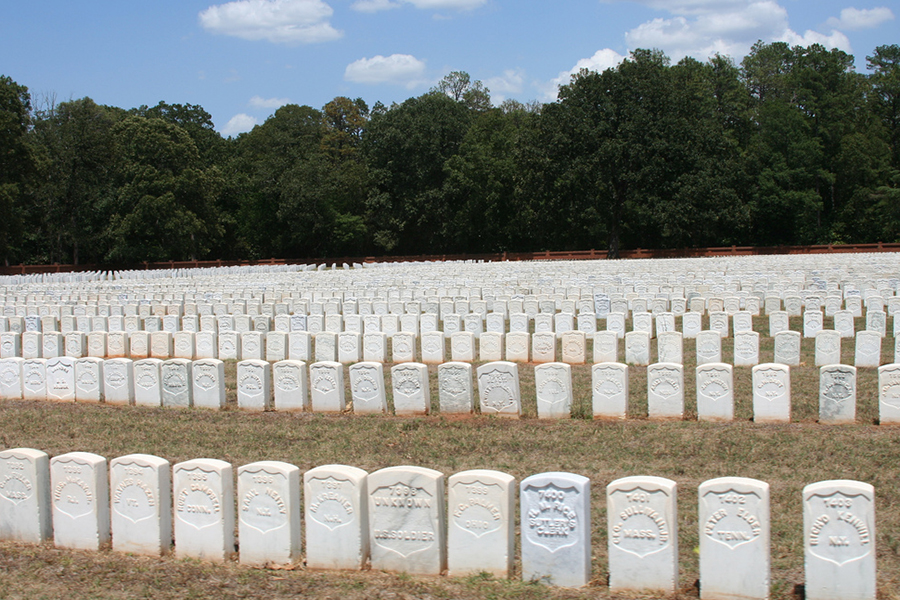
Andersonville National Historic Site
Located in Georgia, this is the site of the infamous Camp Sumter, also known as Andersonville Prison. This Confederate prison was stuffed to four times its intended capacity, with prisoners living in filth and precious little food or water. Of 45,000 Union soldiers held here, 13,000 died of diseases like scurvy and dysentery.
With many Civil War prisons, there are lingering questions over whether the horrible conditions were a result of malice or simply a lack of necessary supplies. There's not much question, though, at Andersonville. While the guards did suffer supply shortages here, it was nothing compared to the skeletal survivors. The commander, Henry Wirz, was ultimately killed for war crimes, and today the camp serves as a stark reminder of some of the ugliest horrors to happen in a war full of them.
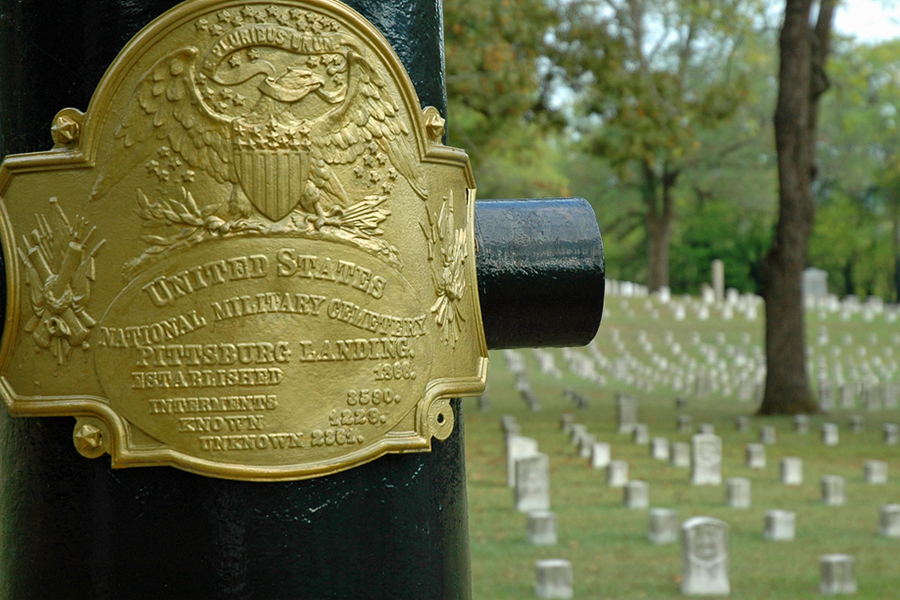
Shiloh is located in southwestern Tennessee. In April of 1862, a massive two-day battle was fought here when General Grant was ambushed by Generals Johnston and Pierre G.T. Beauregard, who wins the award for "most Confederate-sounding name ever."
The Confederates were unable to stop the Union from advancing into Mississippi, but they did make this two-day fight one of the bloodiest battles in American history. At the time, this single two-day battle saw more casualties than all of America's previous wars combined.

The Battle of Appomattox Court House is widely considered to be, effectively, the end of the Civil War. Lee had been caught up in the "Siege of Petersburg," a war of attrition surrounding a crucial Confederate supply center that lasted for nine and a half brutal months.
He finally fled the city, hoping to meet back up with the Army of North Carolina, but was cut off. The house where the surrender took place was dismantled to be used as an exhibit, but that never happened. It has since been reconstructed and serves as part of the Appomattox Court House National Historical Park.
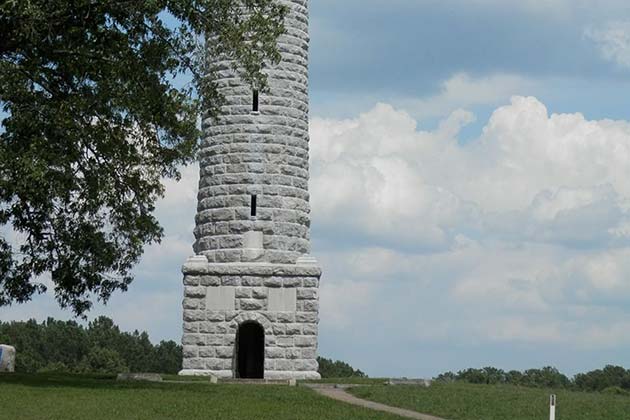
Chickamauga and Chattanooga National Military Park
Chickamauga and Chattanooga, located in Georgia and Tennessee respectively, is home to a six-month standoff. The Federal Army was routed to Chickamauga in September 1863 but was forced to retreat to Chattanooga. There, the Confederate Army cut off supply lines and began to shell the city. It went down in history as being one of the most significant Union defeats, and the second-highest number of casualties, only after the Battle of Gettysburg.
It’s estimated that over 1,600 Union soldiers and 2,300 Confederate soldiers were killed during the battle. On top of that, 24,430 soldiers were wounded on both sides. Historic markers indicate where armies changed positions to torment each other along the Tennessee River and Missionary Ridge, where a critical battle was fought.

Mobile Bay is an inlet of the Gulf of Mexico, located in Alabama. It's also the site of one of the biggest naval battles of the war. It was here that the Union's 18 ships engaged four from the Confederacy. This was the battle of the ironclads, a weird, high-tech battle that saw both sides lose one of their naval behemoths.
This battle shut off a major supply route for the Confederacy. Combined with the taking of Atlanta, this pushed the Union to greater morale and helped get Lincoln re-elected.
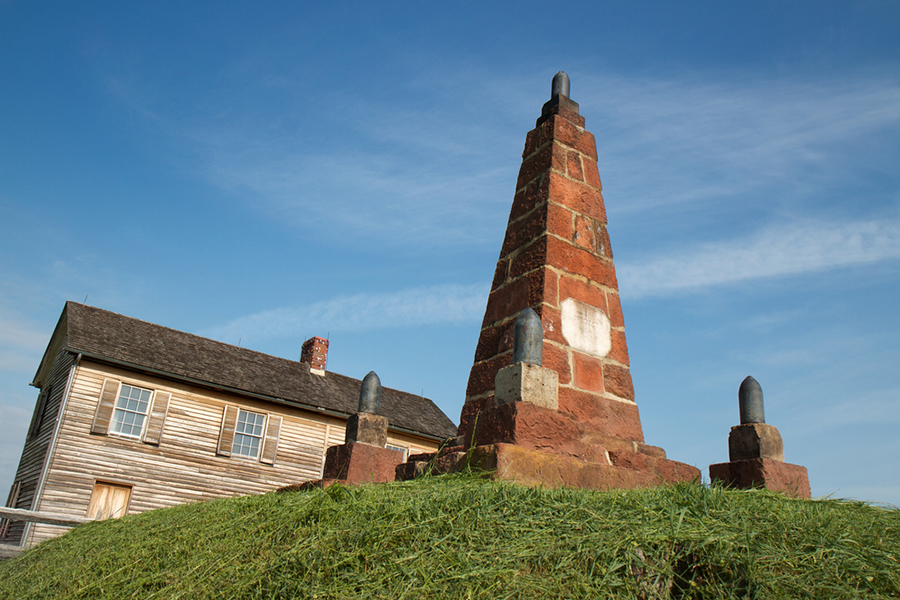
Bull Run/Manassas
Manassas, Virginia, is the site of two different battles, referred to separately as "Bull Run" and "Manassas" by the Union and Confederacy, respectively, because they apparently couldn't even agree on what to name their fights. The first battle here was in July of 1861.
It routed a campaign to capture Richmond and was perhaps the first indication that the U.S. was actually in for a long-haul fight instead of the quick suppression of a small uprising. The second battle involved an ill-advised attempt to "bag" Jackson, unaware that Lee's army was also present. The Union forces were defeated so soundly that Lee launched his campaign to invade the North.
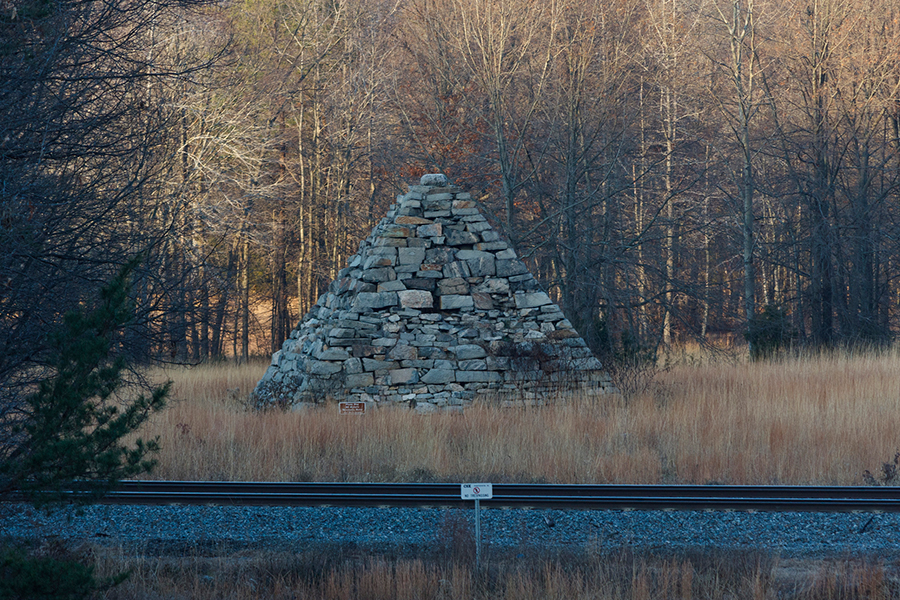
Fredericksburg
Fredericksburg was the site of a failed Union attempt to cross the Potomac and take the Confederate capital at Richmond. There were nearly 200,000 soldiers present that day, the largest concentration in the war.
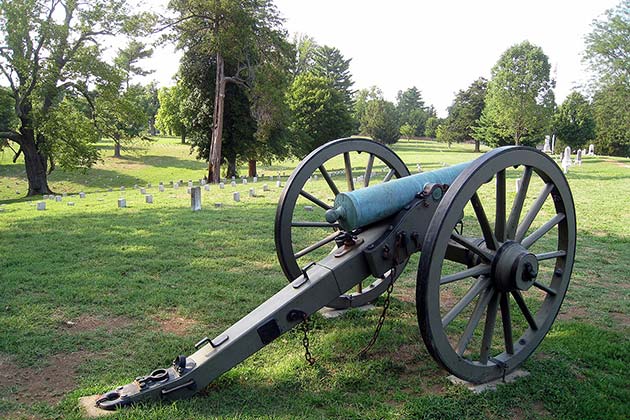
It was also one of the most decisive victories the Confederacy had during the war, with Jackson and Lee routing Burnside and causing roughly three times the casualties that they received themselves.

Glorieta Battlefield
Glorieta Pass, located in New Mexico, was a huge battle and is sometimes referred to as the “Gettysburg of the West.” The conflict occurred because the Confederacy hoped to control the West, ranging from New Mexico and Texas, up through Colorado and California. This would give them more wealth and land than before. Some historians even think the Confederacy wanted to invade Mexico.
The Union already had the West locked down and were alerted to an attack before the Confederates were able to reach them. Confederates managed to push the Union soldiers back, but they were forced to retreat after their supply train was destroyed. This left them without supplies, horses, and mules.

The Battle of Chancellorsville
The Battle of Chancellorsville occurred after Fredericksburg. Following the terrible loss, some of Burnside’s subordinates lobbied Congress for a command change. Lincoln replaced Burnside with Joseph Hooker because he showed promise as a commander. Lincoln told Hooker to attack Lee’s army, and this led to the Battle of Chancellorsville.
Hooker sent his army around Lee’s left flank and behind his positions. Lee and Stonewall Jackson countered, which surprised Hooker as he expected a retreat to Richmond. The two armies went at it until Hooker’s army retreated across the Rappahannock. The battle concluded with 1,606 Union casualties and 1,665 Confederate casualties, including Stonewall Jackson who died of pneumonia a week after being fatally wounded by his own soldiers.
More for You
Recalled Noodles Updated To Highest Risk Level by FDA
I went to Cracker Barrel and saw why the restaurant chain is 'not as relevant' as it once was
Donald Trump's Chances of Beating Biden In Pennsylvania, According to Polls
Don't Be Surprised by These 3 Social Security Changes Coming in 2025
The 5 most common deathbed regrets, according to a palliative care nurse
"I Texted My Dad To Immediately Pick Me Up": 23 People Are Recalling The Bizarre "House Rules" They Experienced At Someone Else's Home When They Were A Kid
'Make This a Federal Offense': EV Owner Exposes Troubling Nationwide Trend at Charging Stations
11 Facts You Should Know About Hard-Boiled Eggs
Woman and Her Corgi Stranded on Plane for 2.5 Hours, Pilot Steps In
Marines revive a World War II airfield on Peleliu in Pacific pivot
Here are 5 common traits of Americans who can never, ever retire — how many do you have?
National Ice Cream Recall Due to Possible Listeria Includes 67 Products from 13 Brands
The 10 Best Ways To Cool Down Your Garage During Toasty Summers
This futuristic power generator kept my home running during an outage. Here's how
How 16-year-old LeBron James was protecting himself from autograph fraud: "That's so somebody can't forge it"
15 Jobs Employers Just Can’t Seem To Fill
8th Grade Teacher Shares the Wildest Things Students Have Ever Said to Her
I Asked 3 Pitmasters To Name the Best Store-Bought BBQ Sauce—They All Said the Same Brand
I quit sugar for 6 months and this is what it did to my face and body
7 Worst States To Buy Property in the Next 5 Years, According to Real Estate Agents

IMAGES
VIDEO
COMMENTS
Flodden Battlefield. The Battlefield of Flodden is the location of the major engagement in the Flodden campaign, where the armies of James IV of Scotland and the Earl of Surrey, met on 9th September 1513. The battle occurred somewhere in the fields to the south of Branxton on the slopes of Branxton Hill, starting late in the afternoon and ...
Come and visit the site of this pivotal battle and imagine your own what ifs… The Flodden Battlefield Trail, an award-winning trail created and maintained by the Remembering Flodden Project (a registered charity), covers the ground where the two armies met in combat and detailed interpretation boards assist the visitor in visualising the ...
The Battlefield of Flodden is the location of the major engagement in the Flodden campaign, where the armies of James IV of Scotland and the Earl of Surrey, met on 9th September 1513. The battle occurred somewhere in the fields to the south of Branxton on the slopes of Branxton Hill, starting late in the afternoon and lasting for 3 hours. By nightfall James, most of his nobles and perhaps ...
Home > Plan a Visit > Attractions > Flodden Battlefield This famous battlefield, just outside Branxton village, was the scene of one of the bloodiest battles ever to take place in the British Isles. On 9 th September 1513, over 500 years ago, 14,000 soldiers from Scotland and England died within a few hours.
The Battlefield of Flodden is the location of the major engagement in the Flodden campaign, where the armies of James IV of Scotland and the Earl of Surrey, met on 9th September 1513. The battle occurred somewhere in the fields to the south of Branxton on the slopes of Branxton Hill, starting late in the afternoon and lasting for 3 hours. By ...
The outcome of this battle was a tragedy that changed the course of history. Join local historian Clive Hallam Baker on a guided walk around Flodden Battlefield on Saturday 9th September, the 510 anniversary of the battle and also on Sunday 10th September to learn the fascinating details of this momentous day.
From the A1 (travelling North): Turn off the A1 at the junction just north of Morpeth onto the A697 (signposted Coldstream). Travel up the A697 for approx 38 miles. Shortly after passing through the village of Milfield, follow the signposts for Branxton. Once in Branxton, the car park for the Flodden Battlefield Trail is clearly signposted.
Private Scottish Borders, Lindisfarne Priory & Flodden Field Tour. Historical Tours. from. $1,158.14. per group (up to 5) The area. Reach out directly. Visit website. Full view.
1. Outflanked. After crossing the border in August 1513, the Scots army took the castles of Norham, Etal and Ford and then dug in their heavy guns on the slopes of Flodden Hill. From this stronghold, they awaited the arrival of the English army which was making its way north via York, Newcastle and Wooler. Aware of the strength of the Scottish ...
The Flodden Monument, a stark granite cross, at the top of Piper's Hill (or Stock Law) is a quater of a mile to the west of the village of Branxton. This iconic battle memorial was errected in 1910 and was funded by public subscription after a fundraising campaign headed by members of the Berwickshire Naturalists Club. In Victorian times this ...
The Flodden Battlefield Trail marks out the key events along a slightly muddy, 1-mile circuit - a rather emotive experience amidst a rural landscape which somehow still seems weighed down by past tragedy. We found getting to grips with the sequence of events a little confusing, but the rural location (unlike many other Scottish battle sites ...
The Flodden monument erected in 1910 has fixed the battle location for all visitors ever since.2 It overlooks the slope of Branxton Hill along the crest of which the Scottish army is thought to have lined up at the beginning of the battle, and was believed to mark the spot where the Scottish king fell.
Important battlefield near the Scottish - English border. Aug 2023 • Couples. We had visited the battlefield in the mid 1980's. Since then the site is better described by way of information boards etc. The field has been planted with wild flowers and some easy to walk paths. From the information provided it is easy to work out the events in ...
To mark the 500th anniversary of the battle, the Flodden 1513 Ecomuseum was created alongside the Flodden 500 project. The Flodden 500 project supported and trained a large number of community volunteers who took part in archaeological fieldwork and documentary research. Through the project's learning programme over ten thousand school children discovered the Flodden story, creating a ...
Flodden ranks as the last great medieval battle fought on British soil and today you can visit Branxton village where there is a monument to the dead and an interpretative trail around the battlefield itself. There are plans to commemorate the quin-centennial anniversary of the battle in 2013 and you can find out more about events here.
To mark the 500th anniversary of the battle, the Flodden 1513 Ecomuseum was created alongside the Flodden 500 project. The Flodden 500 project supported and trained a large number of community volunteers who took part in archaeological fieldwork and documentary research. Through the project's learning programme over ten thousand school children discovered the Flodden story, creating a ...
The Battle of Flodden, Flodden Field, or occasionally Branxton or Brainston Moor was fought on 9 September 1513 during the War of the League of Cambrai between the Kingdom of England and the Kingdom of Scotland and resulted in an English victory. The battle was fought near Branxton, in the county of Northumberland, in northern England, between an invading Scots army under King James IV and an ...
Name: Batle of Flodden Date: 9 September 1513 War period: Early modern Start time and duration: 4pm lasting several hours Outcome: English victory Armies and losses: English under Earl Surrey with around 26,000 men; Scottish under King James IV with 35-40,000 men.Losses: English: circa 4,000; Scottish: circa 10,000. Location: securely located in the fields south of the village of Branxton and ...
A fantastic way to learn about the Battle of Flodden and explore some magnificent Northumbrian countryside. • Dogs on leads welcome. • Meet outside St Paul's church, Branxton. Parking opposite the church. • Adults £8.00, Children £4.00. • Please wear suitable clothing and footwear as the battlefield walk can often be muddy. • 2 ...
public Location. directions_car Getting Here. accessible Accessibility. storefront Local Amenities.
Flodden Battlefield: Smallest Visitor Centre in the world - See 180 traveller reviews, 143 candid photos, and great deals for Cornhill on Tweed, UK, at Tripadvisor. ... The site has been improved since our last visit and is now more accessible to people with impaired mobility. The information boards are very informative and help to build up a ...
As dusk fell, the English were masters of the field. Perhaps as many as 8,000 fell in total; the English losses made up only 1,000. Flodden was the worst of Scotland's many defeats on the English border. The battlefield today. Today, there is a car park in Branxton and the church is well worth a visit.
Day 1 - Introduction. Assemble at our Edinburgh hotel and check-in for four nights. Introductory talk 'The Great Cause, England and Scotland at War' followed by dinner. Day 2 - Flodden. Just over 500 years since the battle of Flodden was fought, we visit the exhibition at Etal castle which was taken and held by the Scots prior to the battle.
Here are some of the most interesting battlefields to visit. (Image via Flickr) https://bit.ly/2XOhTYs Fort Sumter. Go to Fort Sumter to stand where it all started. Tensions had been leading to ...